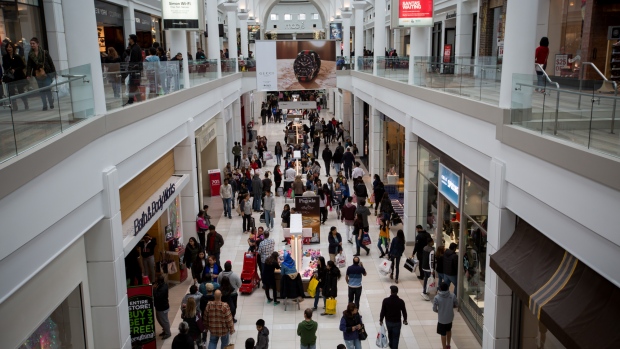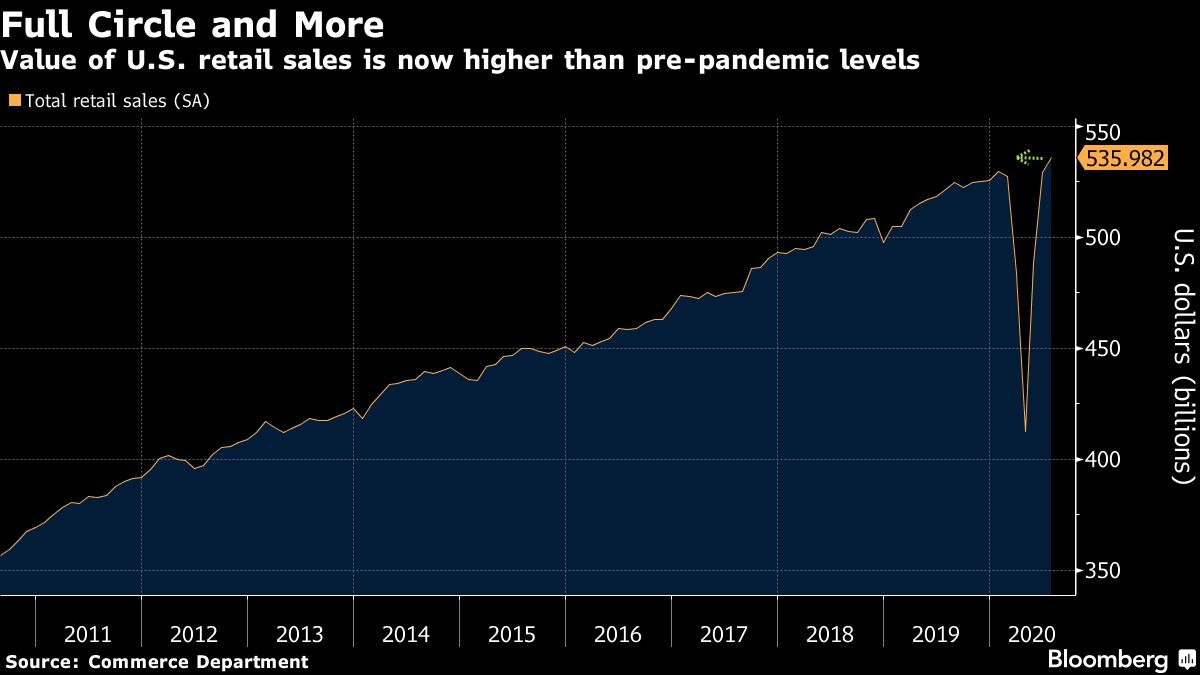Aug 14, 2020
Rebound in U.S. retail sales slowed in July amid virus surge
, Bloomberg News

The rebound in U.S. retail sales slowed in July by more than expected, indicating a surge in coronavirus cases and still-high unemployment cooled the economic recovery.
The value of retail purchases increased 1.2 per cent from the prior month after an upwardly revised 8.4 per cent gain in June, according to Commerce Department data released Friday. The median estimate in a Bloomberg survey of economists called for a 2.1 per cent increase in July.
Even so, the total value of retail sales was above pre-pandemic levels, and July purchases were up 2.7 per cent from a year earlier, indicating one major part of the economy has returned to near its previous trend.
U.S. stock futures and Treasury yields remained lower after the report.

The slowdown, compared with June, reflected declines in sales of motor vehicles and building materials, along with weaker gains at restaurants and clothing stores. The report is in line with previous high-frequency data that suggested the economic rebound largely stalled in July.
“Things have slowed,” Michael Gapen, Barclays Plc’s chief U.S. economist said on Bloomberg Television. “That is consistent with an initial snapback and an ongoing recovery. The July data in total suggest the economy still has momentum. The open question is whether we are going to have enough momentum to carry that through into September and October.”
The so-called “control group” subset of sales, which excludes food services, car dealers, building-materials stores and gasoline stations -- and is sometimes seen as a better gauge of underlying trends -- rose 1.4 per cent from the prior month, more than analysts projected.
The retail sales report showed nine of 13 major categories rose, with the biggest increase coming at electronics and appliance stores. Such sales jumped 22.9 per cent following a 37.6 per cent gain in June.
--With assistance from Catarina Saraiva, Jordan Yadoo, Edith Moy, Greg Sullivan, Steve Matthews and Sophie Caronello.